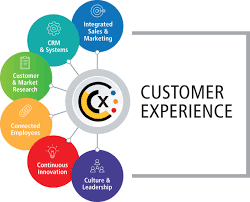In business, there are so many risks attached to it, but data-driven decisions reduce more risky decisions. The data-driven decision lies in consistency and perpetual growth. It enables companies to create new business opportunities, generate more revenue, predict future trends, optimize current operational efforts, and produce actionable insights. This article intends to lay emphasis on data-driven making, marketing, instructions, as well as how its marketers operate.
Data-Driven Making
Data-driven decision-making involves using facts, metrics, and data to guide strategic business decisions. However, these decisions must align with your goals, and objectives. Meanwhile, if organizations realize the importance of their data, then it means that business analyst, sales manager, or human resource specialist are allowed to make better decisions with data.

Basically, data-driven decision making involves working towards key business goals by leveraging verified, analyzed data rather than merely shooting in the dark.
Read Also: Best easy advertising campaign guide (+free strategy)
Data–driven marketers
Data-driven marketers use customer data to predict their needs, desires and future behaviours. This insight helps in developing personalised marketing strategies for the greatest possible return on investment. Below are steps to becoming a data-driven marketer.
7 Steps to Becoming a Data-Driven Marketer
#1. Set data goals and objectives
Before opting for a new marketing campaign, it is vital to have a lay down goals and objectives. These goals provide clarity on what you want with an action plan on how to achieve it.
Whenever it is observed that your organisation has a strong understanding of the S.M.A.R.T goals framework, all you’ve got to do is to step back and take a look at historical and rival data. Similarly, you can set a benchmark based on this data to help you create goals that are relevant to your business.
#2. Utilize marketing tools
Secondly, obtaining access to the right data is the marketing tools to apply. Users behaviour on your website and social media platforms, to the success of your email and push notification campaigns are a bunch of tools that will help you understand customer’s data to the best of your knowledge with instantaneous reporting.
#3. Personalizing your marketing campaigns
Becoming a data-driven decision marketer entails getting to know what gets your consumer up on daily basis. This insight ultimately suggests that you can get more personal communications with them. Whether it’s push notifications or email campaigns, if it comes across as irrelevant, it will not attract the attention of the recipient. Therefore use data to guide all aspects of your marketing, such as the message, the content, as well as the time in which it was sent. Personalising these elements gives you a higher chance of having the right person to receive the content, on time, through the right channel.
#4. Set up re-marketing campaigns
In order to set up a re marketing campaigns, data, and some smart little browser cookies, allows marketers have the ability to follow website visitors around the internet. Therefore, whether they make a purchase, or leave something in their basket. Using tools such as Google Ads can help you create highly targeted audience lists base on their behaviour and intent. Meanwhile, with these lists, you can explicate customers ads that are relevant and personalised.
#5. Embrace marketing automation
Data coming in from various different channels can certainly become overwhelming. Therefore, having a marketing mechanisation decision tool is essential for a data-driven marketer. Using the right tools, you can set up workflows that are base on a contact’s behaviour. This means that you can feel relaxed knowing that your customers are receiving all the right information based on their website interactions. So, If you have a number of tools in your marketing stack, you can also benefit from platforms such as Hurree. This platform gives you the ability to segment your audience, and view reports, at a space.
#7. Monitor KPIs and ROI
Gaining the ability to track and control your key performance indicators, as well as return-on-investment, was tolerably impossible in the past. However, using modern data-driven decision marketing tools, you can get instantaneous reports to track and monitor all campaign activity. Marketers use this information, to optimise their efforts and improve campaign performance regularly.
Data Driven Instructions
Data-driven instruction involves using information gathered from learning results to determine the next outcome of instructions. Moreover, the purpose of data-driven instruction is to use the information to guide teaching and learning.
Also, it is an educational approach that relies on information to inform teaching and learning. The idea refers to methods which teachers use to improve instruction by looking at the information they have about their students. However, this takes place within the classroom, compared to data-driven decision making.
Data-driven marketing
This is the strategy of using customer data for a targeted media buying and creative messaging. It is one of the unique transformational advances in digital advertising. In addition, it provides you with the information that can help develop marketing campaigns that can capture the attention of your audience. It can as well reach new consumers while also building a bond with present ones. With driven decision marketing tools, you can effectively analyse your data. This will equip you to better foresee the needs and wants of your users. Thus, allowing you to suffice their expectations easily. Read Also: MARKETING INFORMATION SYSTEM: A Detailed Guide
Conclusion
There’s no better time than today to start using data-driven marketing principles for your business. The data-driven decision helps you analyse your data by understanding the journey your consumers take to purchase and identify opportunities.
Furthermore, when a company uses a data-driven strategy, it means makes important decisions based on data analysis and presentation. The data-driven decision allows companies to examine and organise their data with the goal of serving their customers and consumers better.
Related Article:





